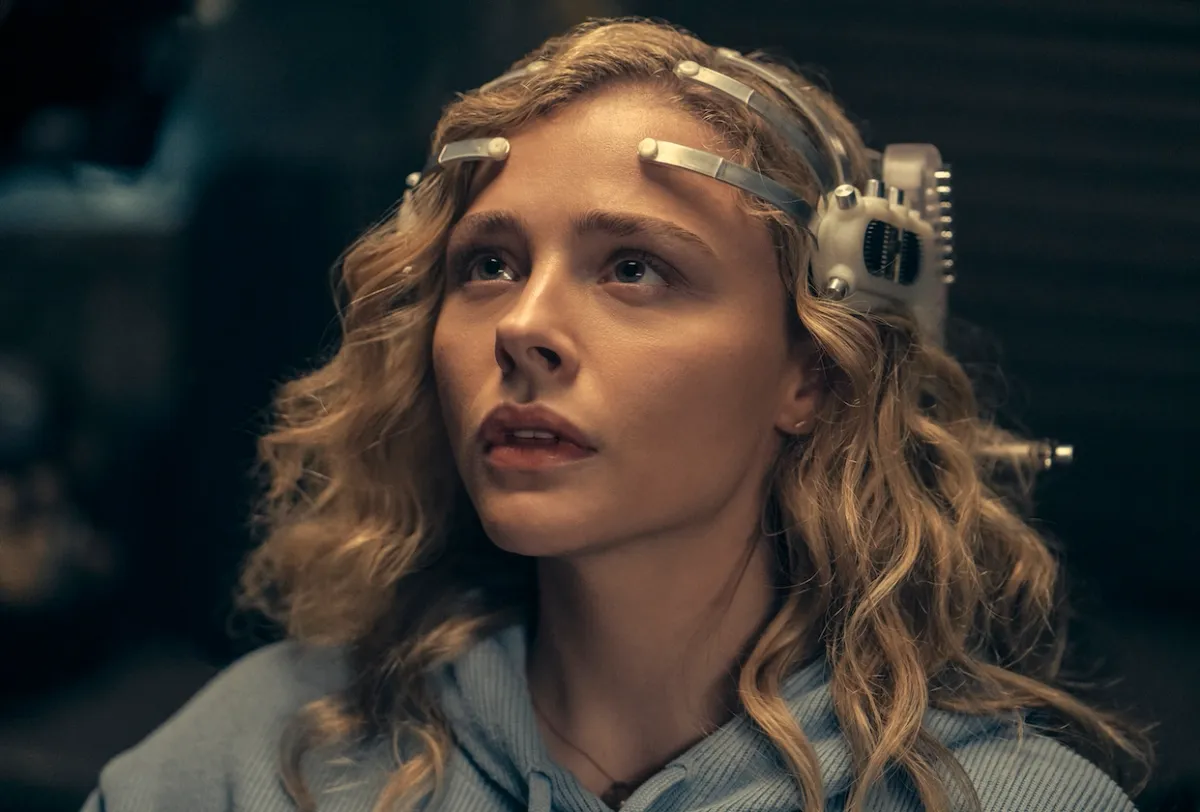Cyberpunk aesthetics
Prime Video's adaptation of William Gibson's The Peripheral gets its first trailer And release date

For all of the weight that William Gibson has imparted on the science fiction world, I'm always a little surprised that we haven't seen more of his writing adapted into films or TV shows. This isn't for a lack of trying: there has been efforts to adapt his 1982 short story "Burning Chrome", as well as his best-known novel Neuromancer (last I heard, Tim Miller was working on an adaptation, but that was back in 2017), but those efforts haven't materialized.
The two films out there that did make it through the production gauntlet have been 1995's Johnny Mnemonic (which I haven't seen), and 1998's New Rose Hotel (Which I'd never heard of until now), neither of which have really gained the recognition that Gibson's attained as a writer.
I've wondered at this, but it's also not too much of a surprise: cyberpunk can be difficult to get right, especially when you're looking at a formative book that was published nearly four decades ago. The aesthetics of this particular type of cyberpunk, with all of its glossy black, wires, neon lighting, and dystopian vibes, is something that films like Blade Runner, Ghost in the Shell, and The Matrix captured perfectly, and I can't help but think that it's that look that holds things back: it just doesn't quite fit with the modern look and feel of the technological world that we live in, especially when the story really relies on the existence of the Soviet Union. (Although maybe we only have to wait for a couple more years for that.)

But Cyberpunk isn't just an aesthetic: it's started as a reaction to the type of technology-aided globalization and corporate privatization that took place in the 1980s, not just the prospect of plugging outselves into computers. At its heart, cyberpunk is about confronting those overwhelming systems, with bonus points for plugging yourself into a sketchy, DIY interface. Films and shows like Minority Report, Person of Interest, and Elysium fit that idea for me, even if they don't quite match up with the aesthetics that you think of when you think "cyberpunk." Gibson's updated the look and feel of his stories: look no further than books like Pattern Recognition.
That's one reason why I'm particularly interested in checking out the next adaptation of one of William Gibson's stories: The Peripheral. It looks very much like it's playing with some of those core cyberpunk ideas, but with an updated look and feel.
The based on his 2014 novel by the same name, it takes place along two timelines: one is set thirty years from now, while the other is set in a far more distant future, about seventy years after an apocalyptic event. These two threads are connected through a digital world, and when one character witnesses a murder in the future, which puts her and her family at risk in her own timeline
There's been a little news here and there about the series, but with its abrupt trailer release, it looks like we'll be getting to see it soon: October 21st, right after Rings of Power goes off the air.
What's most interesting to me here is that the series is coming from Lisa Joy and Jonathan Nolan, the two creatives who reimagined Westworld for HBO and who created CBS's fantastic thriller Person of Interest. Between those two shows, they've been playing with some ideas that are deeply ingrained with cyberpunk: how does technology allow political and economic systems to oppress people? In Person of Interest, the US government has a computer system that's somewhat sentient, and which feeds the social security numbers of someone linked to an upcoming problem to its creator (the trick of the show and episodes is you don't know if the person is the perpetrator of a crime or the victim of one.) Westworld went full glossy AI thriller in its third season, looking at how corporations use data to try and optimize the world. (I haven't finished it quite yet, but I've generally liked what I've seen.)
This trailer doesn't show off much (remember, first teasers are generally there to impart what the show will feel like, rather than giving away any big concrete plot details), but it certainly feels like a blend of these modern sorts of cyberpunk stories (lots of gloss, minimalism) and traditional cyberpunk: there's some body modifications and a sword, as well as lots of inlaid glass displays and whatnot. It does look intriguing: enough that I'm thinking I need to pull the book out and give it another try (I've had a couple of abortive attempts on it).